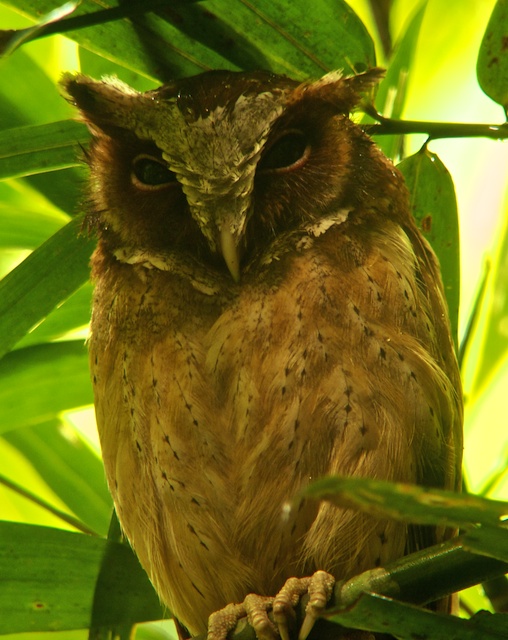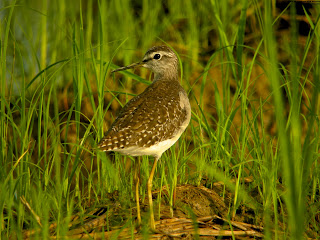White-winged Tern
Kedah Coast, Malaysia
13.10.11
I regret to say I have had a couple of setbacks over the last week. First of all a bottle of water inside my waterproof bag emptied itself while I was in Malaysia and appears to have done for my backup camera, a Nikon P5100. I am beyond despair about this accepting it as a twist a fate. I take consolation that it might have been a new, expensive replacement for my P6000. Two cameras in two weeks. So no camera - a horrible feeling!
White-winged Terns
Kedah Coast, Malaysia
13.10.11
Secondly at the start of the week I was stricken with a fever for the first time in these tropical parts, conjoined with a bacterial infection, and was confined to bed for three days. I am mightily relieved to say that blood tests revealed I have neither Malaria nor Dengue. I am now on the road to physical recovery following three days of complete rest and a continuing course of medication. I have to say these two major diseases must be truly horrible if what I had was lower grade.
Bridled Tern
Kedah Coast, Malaysia
13.10.11
So no birding and no blogging until now. Some good news! My Nikon P5100 powered up last night so I have a working camera. Phew! What’s important is the pressure is off in terms of buying a replacement. I can go out to the reservoir this afternoon and shoot if I want to! However I do want a new camera and I have been doing plenty of research. Good to be under no pressure!
A Couple of Malay Crew
Kedah Coast, Malaysia
13.10.11
Back to Malaysia last week. It struck me that the pelagic was, simply put, a wonderful day's birding, as good as it gets. Nothing to do with being in on a first observation of a new species for Malaysia, although that helps! That was just a very lucky coincidence that I was with Dave when the Little Gull appeared. I need to be honest and say it is 95% likely that I would not have been able to call it on my own. It is very kind of Dave to share the credit. But regardless of this, it was just such an interesting day on the boat plus the birds get in really close. Photographers, you have been told!
A Working Fishing Boat
Kedah Coast, Malaysia
13.10.11
Dave Bakewell to his eternal credit has developed an excellent relationship with some local fishermen and so long as their boat is going out, which it normally does 6 days a week, Fridays excepted, he can go. The only thing that is asked is to keep out of the way when the nets are out and the crew is at work.
Catch of the Day
Kedah Coast, Malaysia
13.10.11
The beauty of it all is the boat uses a purse seine net to catch anchovies. "Chum" not necessary so no noxious smell! Once the net is out the birds arrive and they come in close and stay with the boat all day. The bottom of the net is then drawn in to stop the catch form escaping and this brings in more birds eager to grab a fish. The net is then hauled in and with it come the birds. The top of the net is supported by buoys and the White-winged Terns and some of the Bridleds perch on these. Once the net is out of the water, along with the catch, the birds follow the boat as the fish are blanched aft and hundreds of birds converge in the hope of catching a snack!
Job done - time for a Smoke
Kedah Coast, Malaysia
13.10.11
Two further noteworthy factors: firstly the boat is robust and seaworthy; Dave also advises that the sea is rarely rough in this area. Secondly the crew are a really pleasant bunch of men and are clearly interested in birds. I couldn't help think about what I might have encountered on a Scottish trawler in the North Sea: half the crew in a raging alcoholic stupor?! Sorry guys! One of the crew is Thai and I think he appreciated the chance to talk a little with me in his native language.
This was a real working boat and it wasn't going to stop because Dave saw a Red-necked Phalarope. Its job was to catch anchovies. But as I said above once the nets are out in come the birds so no real need to stop. Fascinating also to be able to observe the boat at work.
So a really great day out from 7:00am to after 7:00pm with little let up and a great sunset over the Indian ocean as we came back in the evening. I have detailed the birding and aquatic animal highlights in the previous blog - these were nothing short of sensational.
Dave Bakewell's' pelagic comes Highly Recommended. If you click this link it will take you to Dave's blog and great photographs of our day out at sea.
Ulu Muda Forest Reserve (this link will take you to a very informative booklet in .pdf format published by World Wildlife Federation - Malaysia ) followed for the next two days. With the benefit of hindsight it couldn't ever really match the pelagic. The sought after Plain-pouched Hornbills had ironically returned to Thailand! Little did I realise they were migratory. I think it would also be fair to say that the birds in general need a lot more effort here but there are undoubtedly some great birds in the forest.
That being said we had not even boarded our boat than I saw a Lesser Fish Eagle perched high on a distant tree and more of these birds featured as we progressed by boat to our destination, EarthLodge. There were Osprey, Crested Serpent Eagle, Stork-billed Kingfisher, Chestnut-breasted Malkoha, Black-capped Kingfisher, Yellow Wagtail, Yellow-breasted Flowerpecker, Brown Shrike, a beautiful large green lizard, flying geckos, and tantalising sounds of much wanted birds: Great Argus, Malay Peacock Pheasant, Gould's Frogmouth........but no sightings. Plus I didn't get much sleep on my first night and then I was in a deep sulk on the second day on account of the lack of sleep and the second camera disaster!
Lantern Bug
Ulu Muda, Kedah,Malaysia
15.10.11
Let me say this: I would not be surprised if EarthLodge became one of the top eco-tourism destinations in Malaysia. It is almost two hours by small boat from the road head, on top of a two hour drive from Penang and it is right in the middle of real rain forest....with primates, elephants and all sorts of groovy stuff. Remote, isolated, hard to reach. Yet it has been really well built. A small resort style collection of bungalows situated at a river crossroads, perfect for wilderness lovers.
Dave Bakewell's blog tells a much more successful tale from a birding perspective.
Common butterfly sp.
Ulu Muda, Kedah,Malaysia
15.10.11
Hymeir Kamarudin who runs
EarthLodge is a great guy and positively infectious about the place. Hymeir couldn't have been more helpful to me. He is also a font of knowledge on the local avifauna and terrain, including its caves. The food is superb and the place has really great facilities with the potential to provide unprecedented comfort in such a remote setting. I wish Hymeir and his colleagues well in this venture and I have made a mental note to return next September when the hornbills should be back.
So a really pleasant and enjoyable few days in Kedah, north-east of Malaysia. I really rather hope I will be able to grow my Malaysia list in the years that follow especially as I can include that Little Gull Malaysia first!
Just as well really that I dropped a casual enquiry by email to Dave Bakewell!









































